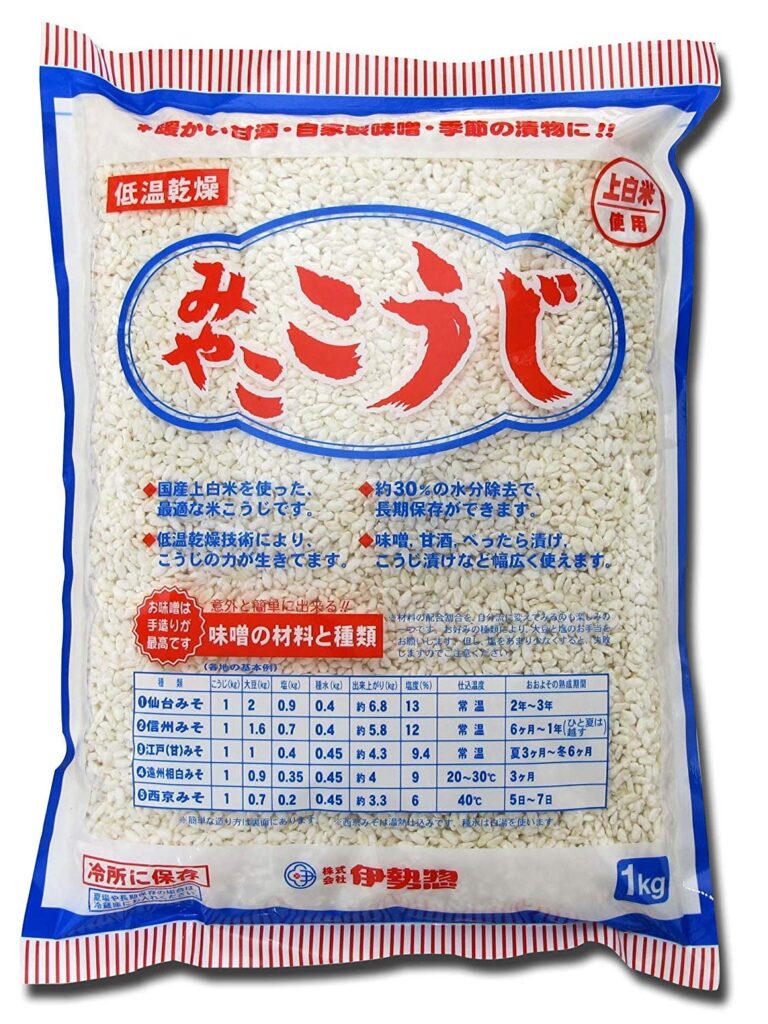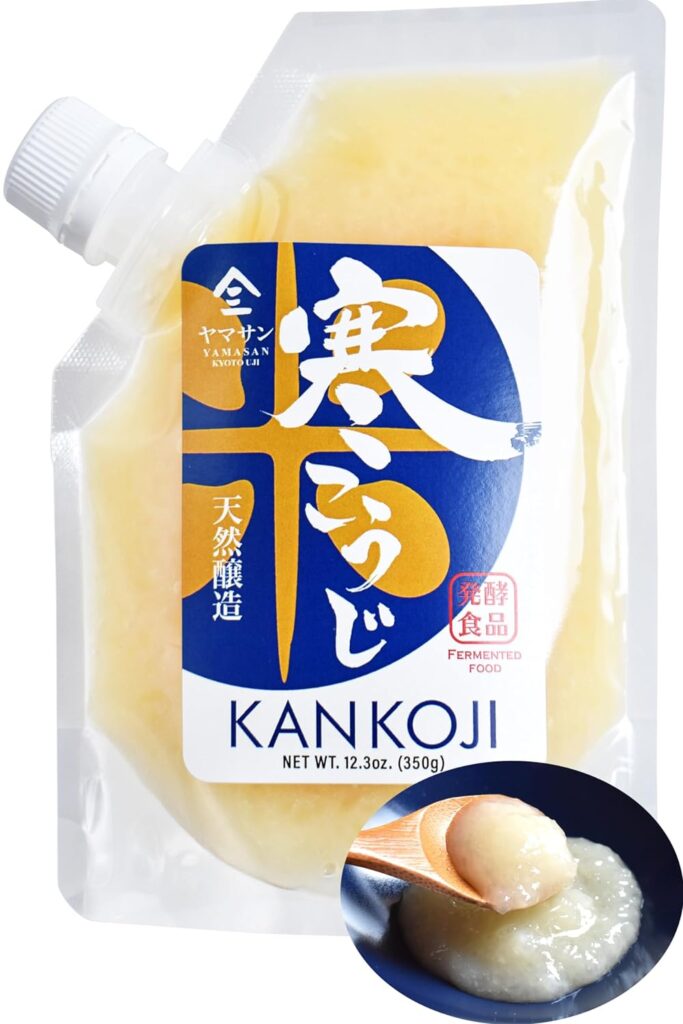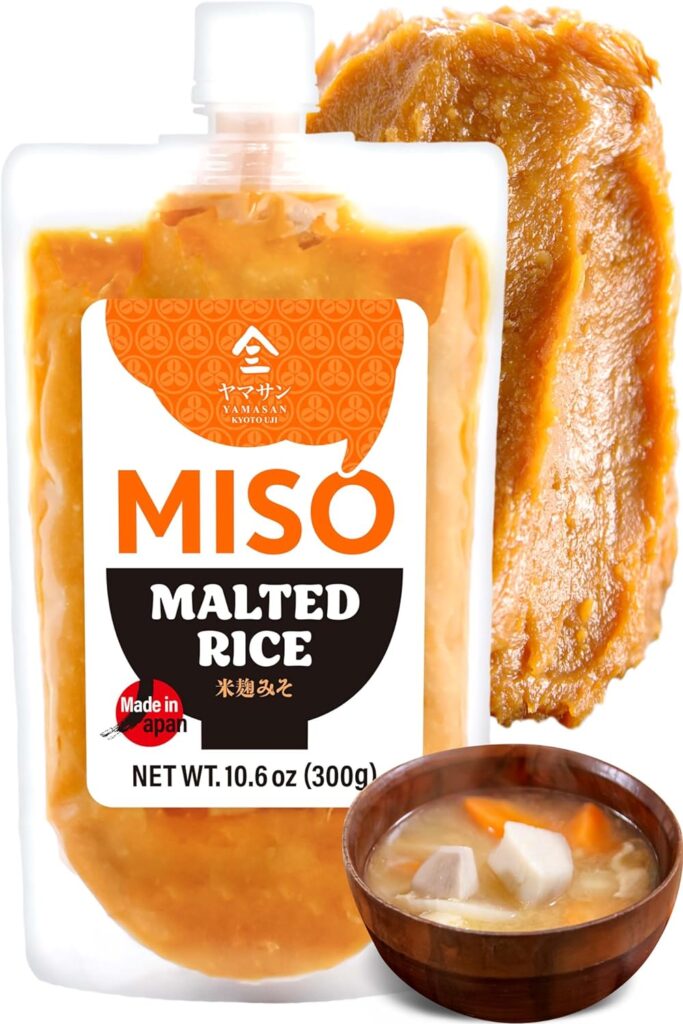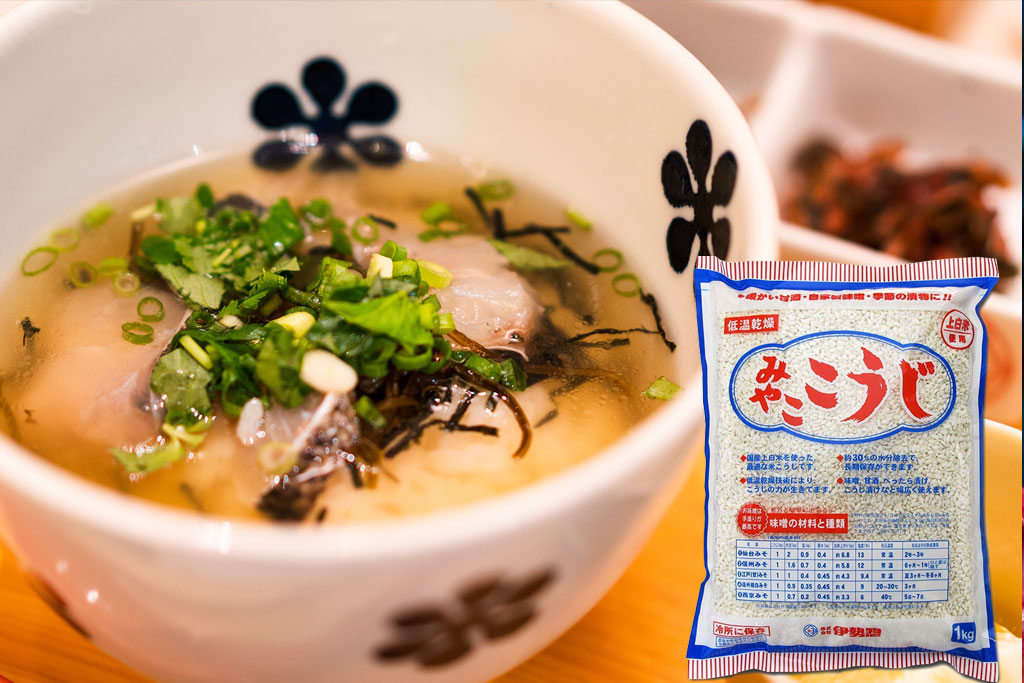This article may contain affiliate links.
What is Koji?
“Koji” refers to a substance created by inoculating steamed rice, barley, soybeans, or other grains with koji mold and cultivating them under specific conditions of temperature and humidity. It is an essential ingredient for the fermentation and aging of miso.
Fermentation is a process in which microorganisms break down organic matter, transforming it into different substances.
In other words, fermentation occurs when the koji mold (microorganism) breaks down rice (organic matter) and transforms it into koji.
In a nutshell, Koji can be described as the ultimate enhancement of the sweetness that arises when you chew rice in your mouth, achieved through the power of the koji mold, a microorganism.
When it comes to foods abundant in koji, it can be said that miso and soy sauce are the most familiar fermented products for the Japanese. And among the various types of koji produced by koji mold, rice koji is the representative one. Rice koji serves as a fundamental ingredient in a wide range of food and beverage items, including sake, miso, mirin, amazake, shio koji, pickles, and more. It is truly a magical ingredient that plays a vital role in the creation of these culinary delights.
Benefit of Koji
There are several benefits to incorporating koji into your lifestyle. Here are some of the main advantages:
Health benefits: Koji offers various health benefits through the enzymes and nutrients produced during the fermentation process. Koji contains enzymes that aid digestion and promote a healthy gut environment, leading to improved immune function and enhanced metabolism.
Enhanced nutritional value: Fermentation with koji improves the nutritional value of ingredients. For example, proteins are broken down into amino acids through koji fermentation, making them more easily digestible and absorbable. Additionally, koji itself is rich in vitamins and minerals, supporting a well-balanced diet.
Improved taste and flavor of ingredients: Koji has the ability to enhance the inherent umami taste and flavors of ingredients. Koji-based products such as miso and soy sauce have distinct and rich flavors. Incorporating koji can elevate the deliciousness of your meals.
Extended shelf life: Koji fermentation improves the shelf life of ingredients. The fermentation process produces acids and alcohols, which inhibit the growth of microorganisms and preserve freshness. This allows for longer storage of ingredients without compromising their quality.
This article may contain affiliate links.

Here is the koji that I regularly use. Any remaining portion after opening can be stored in the freezer. I make soy sauce koji and salt koji, which can be used as condiments similar to salt or soy sauce. It also works well as a marinade for meat, resulting in a tender texture and enhanced flavor.

This product is already prepared as a seasoning using salt koji, so you can skip the fermentation process. It might be a good option for those who are using koji for the first time and want to give it a try. If you enjoy using koji and want to save on costs, I recommend trying fresh koji for your future needs.

This is miso koji. It is used to make miso soup, but it also adds delicious flavors when used in vegetable stir-fries or marinades. Personally, I like to mix a little bit of miso koji with mushroom seasoning, add plenty of vegetables, and make miso soup.
If you enjoy organic flavor, you can also use kombu.
Weee!
Weee is the largest Asian and Hispanic grocery store where you can order online with free shipping on orders over $35. Most of the time, I go to an actual grocery store, but when I don’t have time, this service is incredibly useful. They provide fresh food consistently.
Get a $10 discount on your initial purchase of $35 or more, plus enjoy free shipping!
How to make:
Ingredients:
-
-
-
- Koji: 100g
- Soy Sauce: 100g
Soy sauce (for later addition) To taste/As needed
-
-
Ingredients:
- Koji: 200g
- Salt: 100g
- Water: 200g~250g
